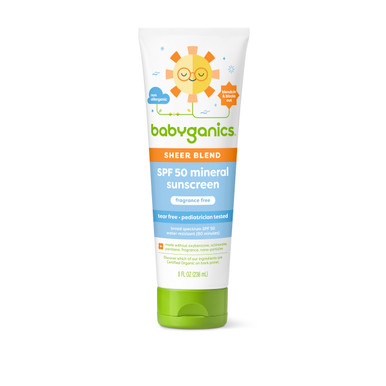
What’s so great about an all-plastic tube?
It’s designed to be recycled; our all-plastic tube is made with multiple all-plastic layers which means no metal or non-recyclable layers in the tubes
Why is it important
This tube is extra special because it’s made with #2 HDPE plastic (think: the plastic in your milk jugs) and is a widely recycled plastic amongst recycling facilities. Just make sure you separate the cap from the tube—currently our caps aren’t designed to be recycled, but we’re working on it!
What are we doing about it?
And because this tube has been designed to make it through a recycling facility, we’re hoping this helps to move the industry closer to the goal of tubes eventually being curbside recyclable across the nation
A lil’ bit on #2 HDPE
All-plastic tubes are still so new (and so exciting) and are being rolled out across babyganics’ suncare products 3oz sizes and larger. So, it’s super important to double check that tubes have the #2 HDPE symbol on it—that’ll tell you whether the tube is the new, all-plastic version (conventional tubes have a #7 symbol on them which indicates that they are made of mixed materials and usually means they are not designed for recyclability).
Recycling tips & tricks
First things first, when you’re done with your tube, make sure all the product is completely gone. A little leftover is a-okay, but why not use up your product before recycling, right? Once that’s checked, make sure that your tube has the #2 HDPE sign on it and is 3 oz or larger. And last but not least, it’s also important to triple check your local waste/recycling facility website to see if they accept and recycle tubes made of #2 HDPE plastic (because these new tubes are still new, not all facilities have agreed to accept them yet). If all signs point to yes, then you’re ready to recycle!
As a heads up, we currently carry a 1.7oz sunscreen tube that is too small to make it through the recycling process. If you have one, make sure to throw it out in the trash!


